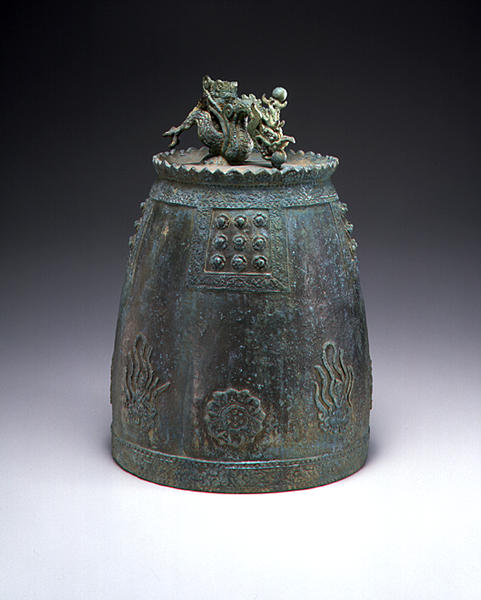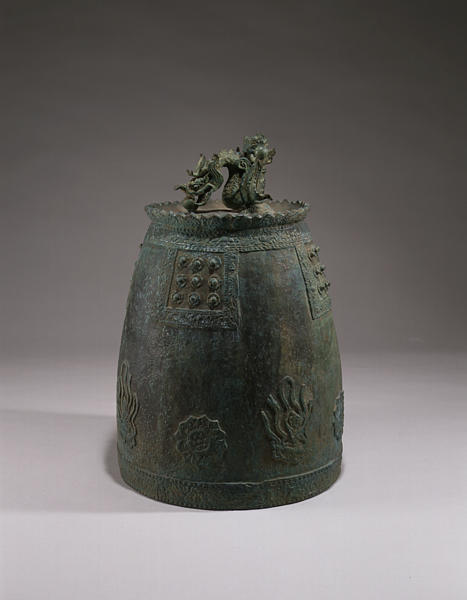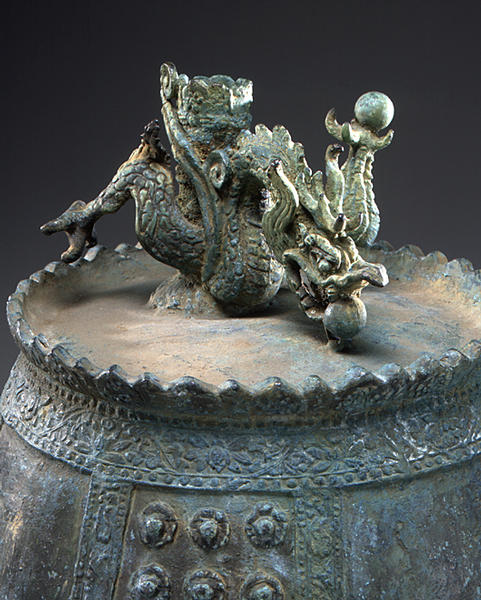梵鐘
- 高麗時代
- 14c
- 青銅
- H-43.5 D-30
解説(開館1周年記念展)
頂きに朝鮮鐘特有の旗插(甬)と呼ばれる円筒をもち,鐘を吊り下げるための金具に,左前足に宝珠をもち肩の辺りに炎のような焔翼のある竜の半身を表している。上辺の突起帯には花弁様の文様を施し,上帯,乳郭,下帯は蓮華唐草文で飾っている。乳は3か所の各区に九つずつを表し,周囲には蓮華形の撞座と雲にのった天人をそれぞれ三つずつ,交互に配している。
長く土中していたために表面の表現にはやや鈍さが感じられるうえ,表面に一部補修の跡が認められるが,作風的な特色はソウルの国立中央博物館所蔵の徳寿宮博物館伝来の739番鐘および京都市の長仙院所蔵鐘などに通じており,高麗末期14世紀の製作と考えられる。
Catalogue Entry
This bell has a cylindrical projection, called yoo peculiar to Korea, at the top. The top of the bell, by the cylinder, is adorned with a dragon, which is designed to serve as a loop for hanging the bell. The dragon holds a sacred gem with the claws of its left front leg and has flaming wings around its shoulders. The projected shoulder that marks the top plane of the bell is executed with a flower petal motif and, as for the body of the bell itself, the upper border, the nipple-like projections, and the lower border are decorated with lotus scrolls. Around the upper part of the bell in each of three areas, nine nipple-like projections are placed. Under these areas toward the middle and bottom of the bell, three hitting spots shaped like lotus flowers alternate with three celestials on clouds.
Since this bell had been buried in the ground for a long time, the surface might be characterized as being a bit dull. There is also evidence of repair on the surface. In terms of stylistic characteristics, this bell has some similarities with Bell no. 739 of the Seoul National Museum, which was formerly owned by the Toksugung Museum, and with a bell in Chosen'in Temple in Kyoto. It can be dated in the 14th century, the late Koryo period.


